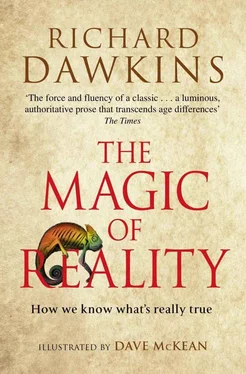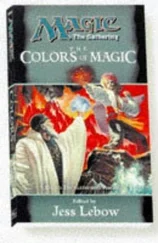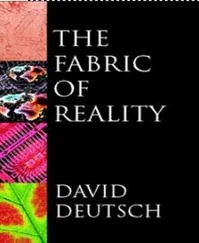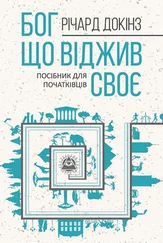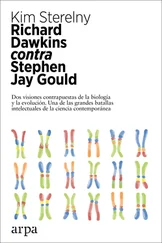Some genes are recognizably the same (with minor differences) in all mammals. Counting the number of letter differences in such genes is useful for working out how closely related different mammal species are. Other genes are useful for working out more distant relationships, for example between vertebrates and worms. Other genes again are useful for working out relationships within a species – say, for working out how closely related you are to me. In case you are interested, if you happen to come from England, our most recent shared ancestor probably lived only a few centuries back. If you happen to be a native Tasmanian or a native American we’d have to go back some tens of thousands of years to find a shared ancestor. If you happen to be a !Kung San of the Kalahari Desert, we might have to go back even further.
What is a fact beyond all doubt is that we share an ancestor with every other species of animal and plant on the planet. We know this because some genes are recognizably the same genes in all living creatures, including animals, plants and bacteria. And, above all, the genetic code itself – the dictionary by which all genes are translated – is the same across all living creatures that have ever been looked at. We are all cousins. Your family tree includes not just obvious cousins like chimpanzees and monkeys but also mice, buffaloes, iguanas, wallabies, snails, dandelions, golden eagles, mushrooms, whales, wombats and bacteria. All are our cousins. Every last one of them. Isn’t that a far more wonderful thought than any myth? And the most wonderful thing of all is that we know for certain it is literally true.
3. WHY ARE THERE SO MANY DIFFERENT KINDS OF ANIMALS?
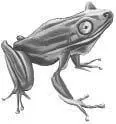
THERE ARE LOTS of myths that attempt to explain why particular kinds of animals are the way that they are – myths that ‘explain’ things like why leopards have spots, and why rabbits have white tails. But there don’t seem to be many myths about the sheer range and variety of different kinds of animals. I can find nothing akin to the Jewish myth of the Tower of Babel, which accounts for the great variety of languages. Once upon a time, according to this myth, all the people in the world spoke the same language. They could therefore work harmoniously together to build a great tower, which they hoped would reach the sky. God noticed this and took a very dim view of everybody being able to understand everybody else. Whatever might they get up to next, if they could talk to each other and work together? So he decided to ‘confound their language’ so that ‘they may not understand one another’s speech’. This, the myth tells us, is why there are so many different languages, and why, when people try to talk to people from another tribe or country, their speech often sounds like meaningless babble. Oddly enough, there is no connection between the word ‘babble’ and the Tower of Babel.
I was hoping to find a similar myth about the great diversity of animals, because there is a resemblance between language evolution and animal evolution, as we shall see. But there doesn’t seem to be any myth that specifically tackles the sheer number of different kinds of animals. This is surprising, because there is indirect evidence that tribal peoples can be well aware of the fact there are many different kinds of animals. In the 1920s a now famous German scientist called Ernst Mayr did a pioneering study of the birds of the New Guinea highlands. He compiled a list of 137 species, then discovered, to his amazement, that the local Papuan tribesmen had separate names for 136 of them.
Back to the myths. The Hopi tribe of North America had a goddess called Spider Woman. In their creation myth she teamed up with Tawa the sun god, and they sang the First Magic Song as a duet. This song brought the Earth, and life, into being. Spider Woman then took the threads of Tawa’s thoughts and wove them into solid form, creating fish, birds, and all other animals.
Other North American tribes, the Pueblo and Navajo peoples, have a myth of life that is a tiny bit like the idea of evolution: life emerges from the Earth like a sprouting plant growing up through a sequence of stages. The insects climbed from their world, the First or Red World, up into the Second World, the Blue World, where the birds lived. The Second World then became too crowded, so the birds and insects flew up into the Third or Yellow World, where the people and other mammals lived. The Yellow World in turn became crowded and food became scarce, so they all, insects, birds and everybody, went up to the Fourth World, the Black and White World of day and night. Here the gods had already created cleverer people who knew how to farm the Fourth World and who taught the newcomers how to do it too.
The Jewish creation myth comes closer to doing justice to diversity, but it doesn’t really attempt to explain it. Actually, the Jewish holy book has two different creation myths, as we saw in the previous chapter. In the first one, the Jewish god created everything in six days. On the fifth day he created fish, whales and all sea creatures, and the birds of the air. On the sixth day he made the rest of the land animals, including man. The language of the myth pays some attention to the number and variety of living creatures – for example, ‘God created great whales, and every living creature that moveth, which the waters brought forth abundantly after their kind, and every winged fowl after his kind,’ and made every ‘beast of the earth’ and ‘every thing that creepeth upon the earth after his kind’. But why was there such variety? We are not told.
In the second myth we get some hint that the god might have thought his first man needed a variety of companions. Adam, the first man, is created alone and placed in the beautiful oasis garden. But then the god realized that ‘It is not good that the man should be alone’ and he therefore ‘formed every beast of the field and every fowl of the air; and brought them unto Adam to see what he would call them’.
Why are there really so many different kinds of animals?
Adam’s task of naming all the animals was a tough one – tougher than the ancient Hebrews could possibly have realized. It’s been estimated that about 2 million species have so far been given scientific names, and even these are just a small fraction of the number of species yet to be named.
How do we even decide whether two animals belong in the same species or in two different species? Where animals reproduce sexually, we can come up with a sort of definition. Animals belong to different species if they don’t breed together. There are borderline cases like horses and donkeys, which can breed together but produce offspring (called mules or hinnies) that are infertile – that is, that cannot have offspring themselves. We therefore place a horse and a donkey in different species. More obviously, horses and dogs belong to different species because they don’t even try to interbreed, and couldn’t produce offspring if they did, even infertile ones. But spaniels and poodles belong to the same species because they happily interbreed, and the puppies that they produce are fertile.
Every scientific name of an animal or plant consists of two Latin words, usually printed in italics . The first word refers to the ‘genus’ or group of species and the second to the individual species within the genus. Homo sapiens (‘wise man’) and Elephas maximus (‘very big elephant’) are examples. Every species is a member of a genus. Homo is a genus. So is Elephas . The lion is Panthera leo and the genus Panthera also includes Panthera tigris (tiger), Panthera pardus (leopard or ‘panther’) and Panthera onca (jaguar). Homo sapiens is the only surviving species of our genus, but fossils have been given names like Homo erectus and Homo habilis . Other human-like fossils are sufficiently different from Homo to be placed in a different genus, for example Australopithecus africanus and Australopithecus afarensis (nothing to do with Australia, by the way: australo- just means ‘southern’, which is where Australia’s name also comes from).
Читать дальше
